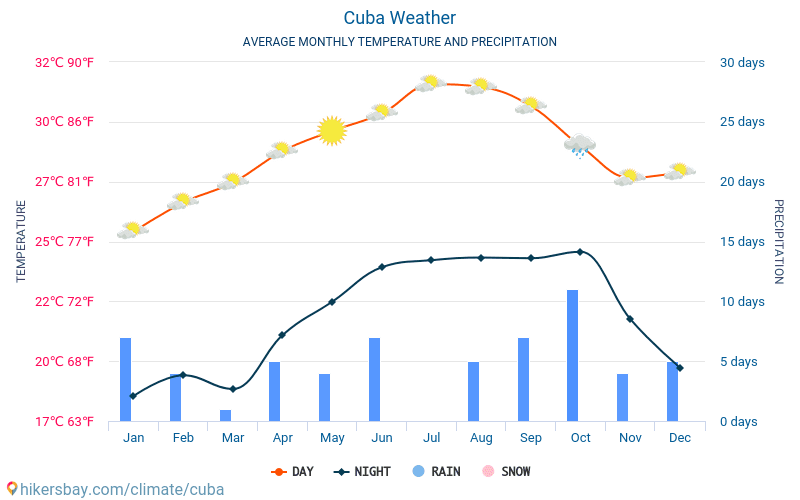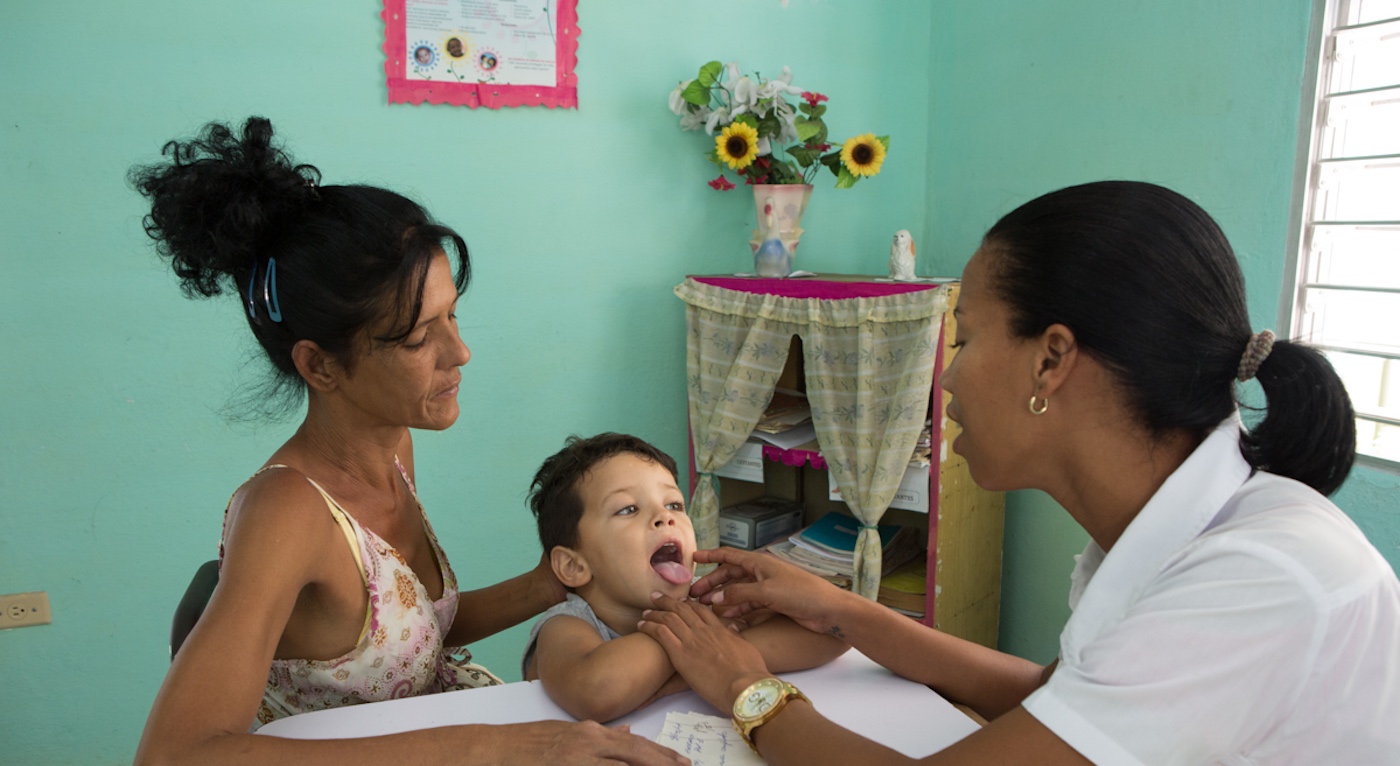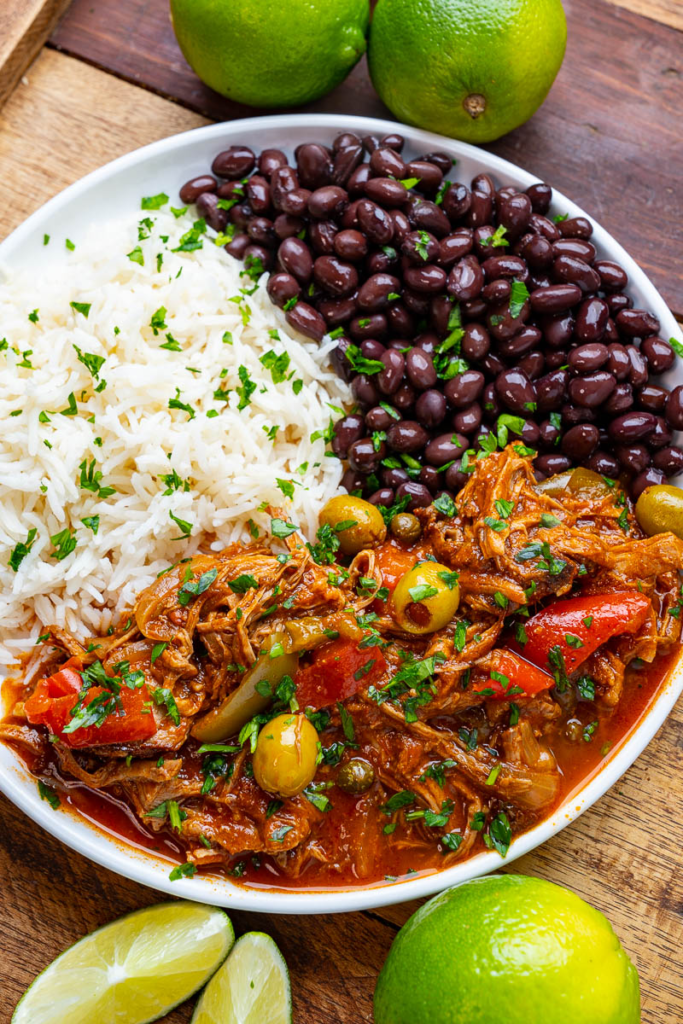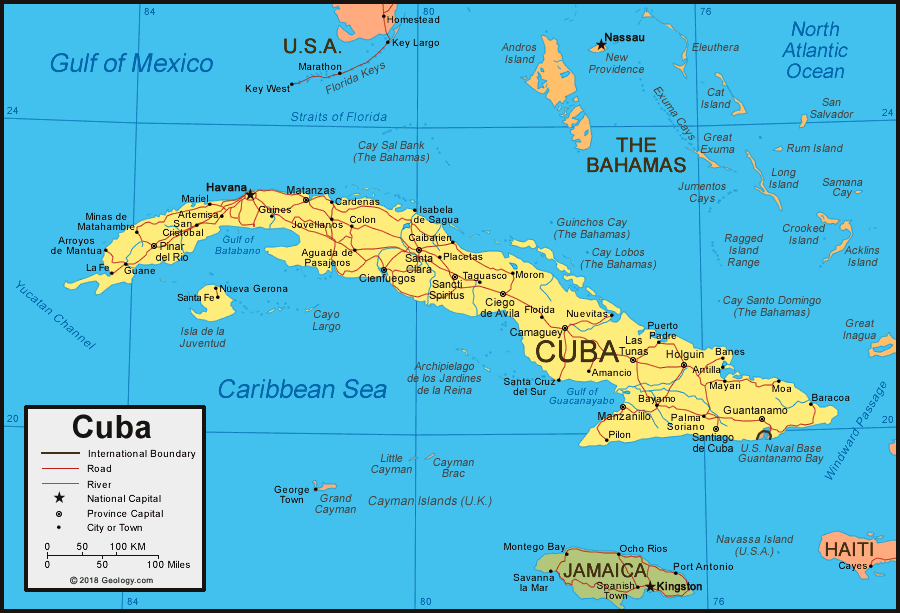Cuba, officially the Republic of Cuba, is an island country comprising the island of Cuba, as well as Isla de la Juventud and several minor archipelagos. Cuba is located where the northern Caribbean Sea, Gulf of Mexico, and Atlantic Ocean meet. Cuba is located at the east of the Yucatán Peninsula (Mexico), south of both the American state of Florida and the Bahamas, west of Hispaniola (Haiti/Dominican Republic), and north of both Jamaica and the Cayman Islands. Havana is the largest city and capital; other major cities include Santiago de Cuba and Camagüey. The official area of the Republic of Cuba is 109,884 km2 (42,426 sq mi) (without the territorial waters). The main island of Cuba is the largest island in Cuba and in the Caribbean, with an area of 104,556 km2 (40,369 sq mi). Cuba is the second-most populous country in the Caribbean after Haiti.
Cuba, a large Caribbean island nation under communist rule, is known for its white-sand beaches, rolling mountains, cigars and rum. Its colorful capital, Havana, features well-preserved Spanish colonial architecture within its 16th-century core, Old Havana, loomed over by the pre-revolutionary Capitolio. Salsa emanates from the city's dance clubs and cabaret shows are performed at the famed Tropicana.
Area: 42,426 mi²
Population: 11.27 million
Currency
- The Cuban Convertible Peso is the currency of Cuba.
- The Convertible Peso is a closed currency, which means it cannot be purchased outside of Cuba. You can change your money at the Cadeca (Money Exchange Bureau) at the Airport on landing in Cuba or at your hotel.
If you reside in the UK you should take Sterling; clean, untorn bills with no writing on them, in £10, £20 or £50 denominations. Please note that Scottish notes are not acceptable. Canadians should take Canadian dollars and if you are from a European destination that uses the Euro, then take Euros. The exchange rate varies on a daily basis - Please note that no foreign coinage can be exchanged, notes only. You are now required to present your passport at all Cadecas and Banks when exchanging money into CUC's.
- The other currency in use in Cuba is the Cuban Peso (CUP). There are 24 CUP's to 1 CUC. As a tourist staying at a resort hotel you are unlikely to come across them. In fact they cannot be bought at hotel Cadecas, so have no fear you will not be palmed off with Cuban Pesos instead of CUC's. Tourists can use the CUP, but it is mostly used by Cubans to pay for their rations, their electricity and water, to buy food in the markets and from stallholders in the streets and to eat or drink in 'peso' bars and restaurants. Basically, as a tourist, you do not have to worry at all about the Cuban peso.
- With regard to the use of Credit or Debit cards in Cuba the following applies. No card issued by a bank that has any connection with the United States will be accepted in Cuba, Debit cards with the VISA logo are usually accepted by your tour rep to pay for trips as well as purchasing goods at outlets that accept debit cards. They can be used in ATM's (if you can find one and it is working) or to draw money from a Cadeca or Bank. MASTERCARDS will not be accepted in ATM's but, as with VISA cards, so long as they are issued by a non US based bank, can be used to draw cash at the counter of a Cadeca or Bank.
Weather
The summer in Cuba is from June to August. These are the hottest months and some people (including the Cubans!) find the heat quite intense. Temperatures rise to 38 Celcius on the Eastern side of the island, which when coupled with high humidity, can be quite unpleasant. On the other hand, summer is one of the most festive times of the year with carnival being held in many cities, and festivals on throughout the island. This is also holiday time for the Cubans so there are many social occasions.
Summer is also a tourist high season because it coincides with the holiday season in Europe. Hotels, flights, and tours can often be booked out well ahead of time, and prices can be higher than during other times of the year.
The hurricane season is from July to November with September and October being the months with the highest probability of cyclone activity. There is on average more rain in these months due to this tropical storm activity. When hurricanes occur they generally aren't a risk to life, however they can cause some interruption to travel plans. Cuba's safety record concerning hurricanes is excellent and it is unusual that in even the biggest storms that there is a loss of life. This is in stark contrast to other countries in the region (such as Haiti but also including the US). Cuba is very well organised, disciplined and prepared for such events and there are excellent evacuation procedures. Tourists are given the highest priority.

Language
the official language in Cuba is Spanish.
Health and security
- the public healthcare system in Cuba covers all citizens. Private hospitals, doctor’s practices, and other private medical facilities do not exist. Instead, all health-related facilities and services are run by the government. Universal vaccinations and other universal programs have almost eradicated diseases like polio, rubella, tuberculosis, or chicken pox.For decades, Cuba has been known to have a large staff of well-trained medical specialists at hand. The research sector is strong as well, particularly in the field of biotechnology or epidemiological studies on chronic diseases.For years, medical tourism has played an important role in the Cuban economy. Brought to the fore in news media by Diego Maradona’s drug rehabilitation in 2000, an ever increasing amount of foreigners arrive on Cuban soil to take advantage of the medical service, both vital and cosmetic.More than 2.8 million tourists travelled to Cuba in 2012. Although no solid figures can be provided for how many went for medical reasons, certain factors illustrate that a large portion did so for just this reason. Not only do many hospitals have special divisions and trained staff to serve the needs of foreign patients, but the government recently created Servimed, alongside CSMC, with the charge of promoting medical services to foreigners.

- Cuba is a very safe place in many ways. Crime is nearly unheard of, they don't have a concept of crime as it exists in other countries. Most resorts are built in partnership with foreign investors and with tourism in mind, so fire alarms, fire extinguishers and other safety devices and procedures are in place on the resorts. The people are so friendly and helpful a traveler can count on being offered assistance in most places, even at the side of roads if you should take a break from scootering or biking. Cuba is well policed, with road safety enforced as well or better than many of the home countries of visitors. Because ownership of a vehicle is not a common thing, those that do own them take very good care, and drive carefully to avoid accidents and problems. All these things help to make Cuba a very safe place to visit.Where safety is most apparently lacking or lax is on "adventures", or excursions. In many of the travelers home countries "adventures" and theme park rides are strictly regulated, inspected, and governed. The spirit of adventure and danger are simulated, but the traveler in the back of the mind knows that the danger is not real. In Cuba, one does not know the level of inspection, the safety laws, or the training involved in those offering adventure tours. It is therefore important for the traveler to use good judgement. Even if it means perhaps forfeiting the fee paid, the life saved, or the injury avoided cannot be measured in pesos.

DON'T
- Do not, under any circumstances, carry drugs or deal with anyone on the subject. This is something the authorities take very seriously, and you may not see the light of day for a while if caught.
- It is legal for Americans to go to Cuba. However, it is illegal for American to have transactions (spend money) in Cuba under most circumstances. What this means is that visitors to Cuba cannot use a credit card that was issued by a US bank or a US travelers check while visiting. Also, Americans cannot secure a room at a hotel before arriving with a US issued credit card. Americans can spend US currency in Cuba- but only if they are authorized to do so with a specific license issued by the Office of Foreign Asset Control (OFAC).
DO
- When you first get to the Cuba sun, please wear sunscreen. you can get burned on the first day and it's not the best experience for the rest of the trip. Also remember to wear shoes or flipflops when you walk near vegetation. There are cactus in Cuba and it hurts when you step on their pins.
- When travelling around Cuba be sure to carry a universal self seating rubber bath/basin travel plug.Most of the accommodation in Cuba (including the good hotels) do not have basin plugs.
Cuisine
One of the most popular entrees in Cuban cuisine is ropa vieja. This stewed shredded beef dish is slow cooked in fresh tomatoes, onions, peppers, garlic and wine to create a mouthwatering meal. And following its origins, the dish is accompanied by white rice, black beans and sweet plantains.















